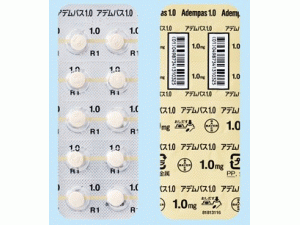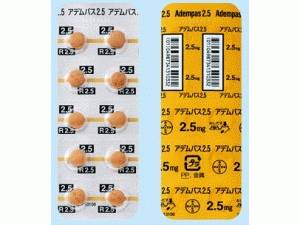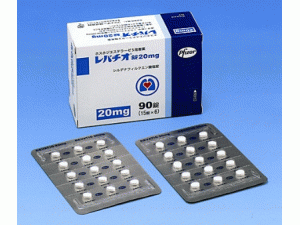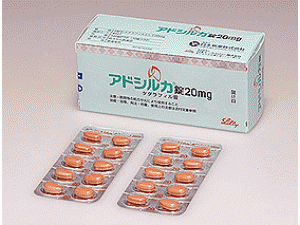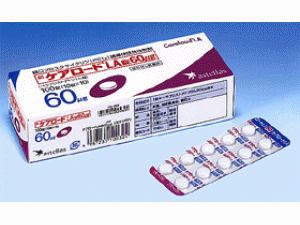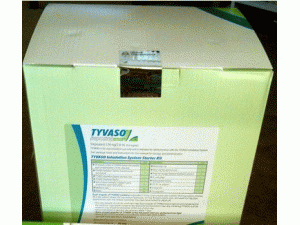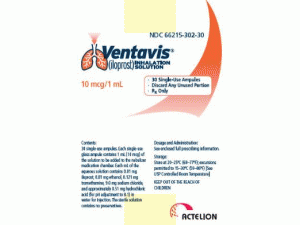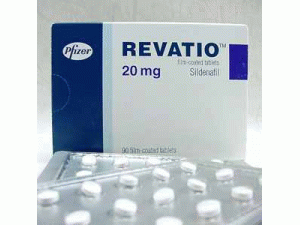阿哌沙班薄膜衣片APIXABAN(ELIQUIS TAB 5MG)
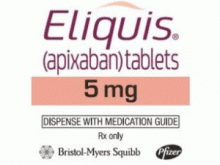 产地国家:美国
处 方 药:是
所属类别:5毫克/片 60片/瓶
包装规格:5毫克/片 60片/瓶
计价单位:瓶
生产厂家中文参考译名:BRISTOL MYERS SQUIBB CO
生产厂家英文名:BRISTOL MYERS SQUIBB CO
原产地英文商品名:ELIQUIS 5MG TAB 60/EA
原产地英文药品名:APIXABAN
中文参考商品译名:ELIQUIS薄膜衣片 5毫克/片 60片/瓶
中文参考药品译名:阿哌沙班
产地国家:美国
处 方 药:是
所属类别:5毫克/片 60片/瓶
包装规格:5毫克/片 60片/瓶
计价单位:瓶
生产厂家中文参考译名:BRISTOL MYERS SQUIBB CO
生产厂家英文名:BRISTOL MYERS SQUIBB CO
原产地英文商品名:ELIQUIS 5MG TAB 60/EA
原产地英文药品名:APIXABAN
中文参考商品译名:ELIQUIS薄膜衣片 5毫克/片 60片/瓶
中文参考药品译名:阿哌沙班
简介
部份中文阿哌沙班处方资料(仅供参考) 英文名:apixaban 商标名:ELIQUIS 中文名:阿哌沙班片 药品简介 口服抗凝血药ELIQUIS(apixaban tablets)获多个国家批准新适应证 中文名称:阿哌沙班片 英文名称:ELIQUIS(apixaban). 【原研公司】辉瑞、百时美施贵宝 作用机制 Apixaban是FXa的一种口服,可逆性,和选择性活性位点抑制剂。对其抗血栓活性不需要抗凝血酶III。Apixaban抑制游离和凝块-结合FXa,和凝血酶原酶活性。Apixaban对血小板聚集没有直接作用,但间接通过凝血酶诱导抑制血小板聚集,通过抑制FXa,apixaban减低凝血酶生成和血栓发展。 适应证和用途 ELIQUIS是一种凝血因子Xa的抑制剂抗凝剂适用于在有非瓣膜病房颤患者中减低卒中和全身性栓塞的风险。 剂量和给药方法 (1)推荐剂量是5 mg口服每天2次。 (2)在有至少下列特性之二患者:年龄≥80岁,体重≤60kg,或血清肌酐≥1.5mg/dL,推荐剂量为2.5mg口服每天2次。 剂型和规格 片:2.5mg和5mg 禁忌证 (1)活动性病理性出血 (2)对ELIQUIS (apixaban)严重超敏性 警告和注意事项 (1)ELIQUIS可致严重,潜在致命性出血。及时评估失血的迹象和症状。 (2)人工心脏瓣膜:不建议使用ELIQUIS。 不良反应 最常见不良反应(>1%)是与出血有关。 药物相互作用 (1)强CYP3A4和P-gp的双重抑制剂增加apixaban的血水平:减低ELIQUIS剂量至2.5mg或避免同时使用。 (2)强CYP3A4和P-gp诱导剂的同时使用减低apixaban的血水平:避免同时使用。 特殊人群中使用 (1)哺乳母亲:终止药物或终止哺乳。 (2)妊娠:不建议使用. (3)严重肝受损:不建议使用。英文版说明书
ELIQUIS(apixaban) Approved in Europe for Preventing Venous IMPORTANT SAFETY INFORMATION COLLAPSE WARNING: (A) PREMATURE DISCONTINUATION OF ELIQUIS INCREASES THE RISK OF THROMBOTIC EVENTS, (B) SPINAL/EPIDURAL HEMATOMA (A) Premature discontinuation of any oral anticoagulant, including ELIQUIS, increases the risk of thrombotic events. If anticoagulation with ELIQUIS is discontinued for a reason other than pathological bleeding or completion of a course of therapy, consider coverage with another anticoagulant. (B) Epidural or spinal hematomas may occur in patients treated with ELIQUIS who are receiving neuraxial anesthesia or undergoing spinal puncture. These hematomas may result in long-term or permanent paralysis. Consider these risks when scheduling patients for spinal procedures. Factors that can increase the risk of developing epidural or spinal hematomas in these patients include: use of indwelling epidural catheters concomitant use of other drugs that affect hemostasis, such as nonsteroidal anti-inflammatory drugs (NSAIDs), platelet inhibitors, other anticoagulants a history of traumatic or repeated epidural or spinal punctures a history of spinal deformity or spinal surgery optimal timing between the administration of ELIQUIS and neuraxial procedures is not known Monitor patients frequently for signs and symptoms of neurological impairment. If neurological compromise is noted, urgent treatment is necessary. Consider the benefits and risks before neuraxial intervention in patients anticoagulated or to be anticoagulated. CONTRAINDICATIONS Active pathological bleeding Severe hypersensitivity reaction to ELIQUIS (e.g., anaphylactic reactions) WARNINGS AND PRECAUTIONS Increased Risk of Thrombotic Events after Premature Discontinuation: Premature discontinuation of any oral anticoagulant, including ELIQUIS, in the absence of adequate alternative anticoagulation increases the risk of thrombotic events. An increased rate of stroke was observed during the transition from ELIQUIS to warfarin in clinical trials in atrial fibrillation patients. If ELIQUIS is discontinued for a reason other than pathological bleeding or completion of a course of therapy, consider coverage with another anticoagulant. Bleeding Risk: ELIQUIS increases the risk of bleeding and can cause serious, potentially fatal, bleeding. Concomitant use of drugs affecting hemostasis increases the risk of bleeding, including aspirin and other antiplatelet agents, other anticoagulants, heparin, thrombolytic agents, SSRIs, SNRIs, and NSAIDs. Advise patients of signs and symptoms of blood loss and to report them immediately or go to an emergency room. Discontinue ELIQUIS in patients with active pathological hemorrhage. There is no established way to reverse the anticoagulant effect of apixaban, which can be expected to persist for at least 24 hours after the last dose (i.e., about two half-lives). A specific antidote for ELIQUIS is not available. Spinal/Epidural Anesthesia or Puncture: Patients treated with ELIQUIS undergoing spinal/epidural anesthesia or puncture may develop an epidural or spinal hematoma which can result in long-term or permanent paralysis. The risk of these events may be increased by the postoperative use of indwelling epidural catheters or the concomitant use of medicinal products affecting hemostasis. Indwelling epidural or intrathecal catheters should not be removed earlier than 24 hours after the last administration of ELIQUIS. The next dose of ELIQUIS should not be administered earlier than 5 hours after the removal of the catheter. The risk may also be increased by traumatic or repeated epidural or spinal puncture. If traumatic puncture occurs, delay the administration of ELIQUIS for 48 hours. Monitor patients frequently and if neurological compromise is noted, urgent diagnosis and treatment is necessary. Physicians should consider the potential benefit versus the risk of neuraxial intervention in ELIQUIS patients. Prosthetic Heart Valves: The safety and efficacy of ELIQUIS have not been studied in patients with prosthetic heart valves and is not recommended in these patients. Acute PE in Hemodynamically Unstable Patients or Patients who Require Thrombolysis or Pulmonary Embolectomy: Initiation of ELIQUIS is not recommended as an alternative to unfractionated heparin for the initial treatment of patients with PE who present with hemodynamic instability or who may receive thrombolysis or pulmonary embolectomy. ADVERSE REACTIONS The most common and most serious adverse reactions reported with ELIQUIS were related to bleeding. TEMPORARY INTERRUPTION FOR SURGERY AND OTHER INTERVENTIONS ELIQUIS should be discontinued at least 48 hours prior to elective surgery or invasive procedures with a moderate or high risk of unacceptable or clinically significant bleeding. ELIQUIS should be discontinued at least 24 hours prior to elective surgery or invasive procedures with a low risk of bleeding or where the bleeding would be noncritical in location and easily controlled. Bridging anticoagulation during the 24 to 48 hours after stopping ELIQUIS and prior to the intervention is not generally required. ELIQUIS should be restarted after the surgical or other procedures as soon as adequate hemostasis has been established. DRUG INTERACTIONS Strong Dual Inhibitors of CYP3A4 and P-gp: Inhibitors of cytochrome P450 3A4 (CYP3A4) and P-glycoprotein (P-gp) increase exposure to apixaban and increase the risk of bleeding. For patients receiving ELIQUIS doses of 5 mg or 10 mg twice daily, reduce the dose of ELIQUIS by 50% when ELIQUIS is coadministered with drugs that are strong dual inhibitors of CYP3A4 and P-gp (e.g., ketoconazole, itraconazole, ritonavir, or clarithromycin). In patients already taking 2.5 mg twice daily, avoid coadministration of ELIQUIS with strong dual inhibitors of CYP3A4 and P-gp. Strong Dual Inducers of CYP3A4 and P-gp: Avoid concomitant use of ELIQUIS with strong dual inducers of CYP3A4 and P-gp (e.g., rifampin, carbamazepine, phenytoin, St. John’s wort) because such drugs will decrease exposure to apixaban and increase the risk of stroke and other thromboembolic events. Anticoagulants and Antiplatelet Agents: Coadministration of antiplatelet agents, fibrinolytics, heparin, aspirin, and chronic NSAID use increases the risk of bleeding. APPRAISE-2, a placebo-controlled clinical trial of apixaban in high-risk post-acute coronary syndrome patients treated with aspirin or the combination of aspirin and clopidogrel, was terminated early due to a higher rate of bleeding with apixaban compared to placebo. PREGNANCY CATEGORY B There are no adequate and well-controlled studies of ELIQUIS in pregnant women. Treatment is likely to increase the risk of hemorrhage during pregnancy and delivery. ELIQUIS should be used during pregnancy only if the potential benefit outweighs the potential risk to the mother and fetus. INDICATIONS ELIQUIS is indicated to reduce the risk of stroke and systemic embolism in patients with nonvalvular atrial fibrillation. ELIQUIS is indicated for the prophylaxis of deep vein thrombosis (DVT), which may lead to pulmonary embolism (PE), in patients who have undergone hip or knee replacement surgery. ELIQUIS is indicated for the treatment of DVT and PE, and to reduce the risk of recurrent DVT and PE following initial therapy. Please see U.S. FULL PRESCRIBING INFORMATION including Boxed WARNINGS, and MEDICATION GUIDE. ELIQUIS is available in 2.5 mg and 5 mg tablets.用药温馨提示:当您服用此药物时,需定期接受医疗专业人士的检查,以便随时针对其药效、副作用等情况进行监测。本网站所包含的信息旨在为患者提供帮助,不能代替医学建议和治疗。
药品价格查询,专业药品查询网站,药品说明书查询,药品比价 » 阿哌沙班薄膜衣片APIXABAN(ELIQUIS TAB 5MG)
药品价格查询,专业药品查询网站,药品说明书查询,药品比价 » 阿哌沙班薄膜衣片APIXABAN(ELIQUIS TAB 5MG)



